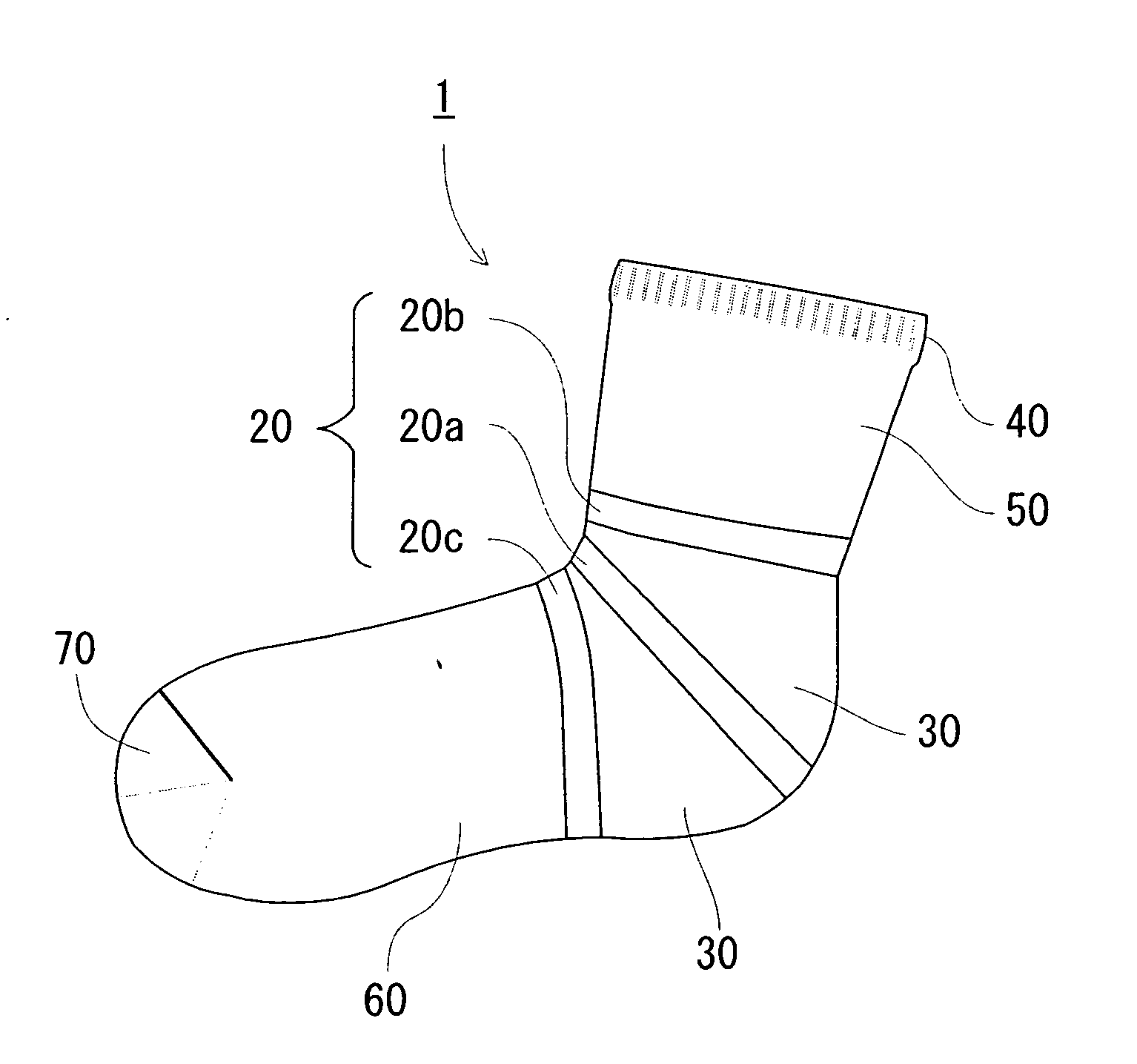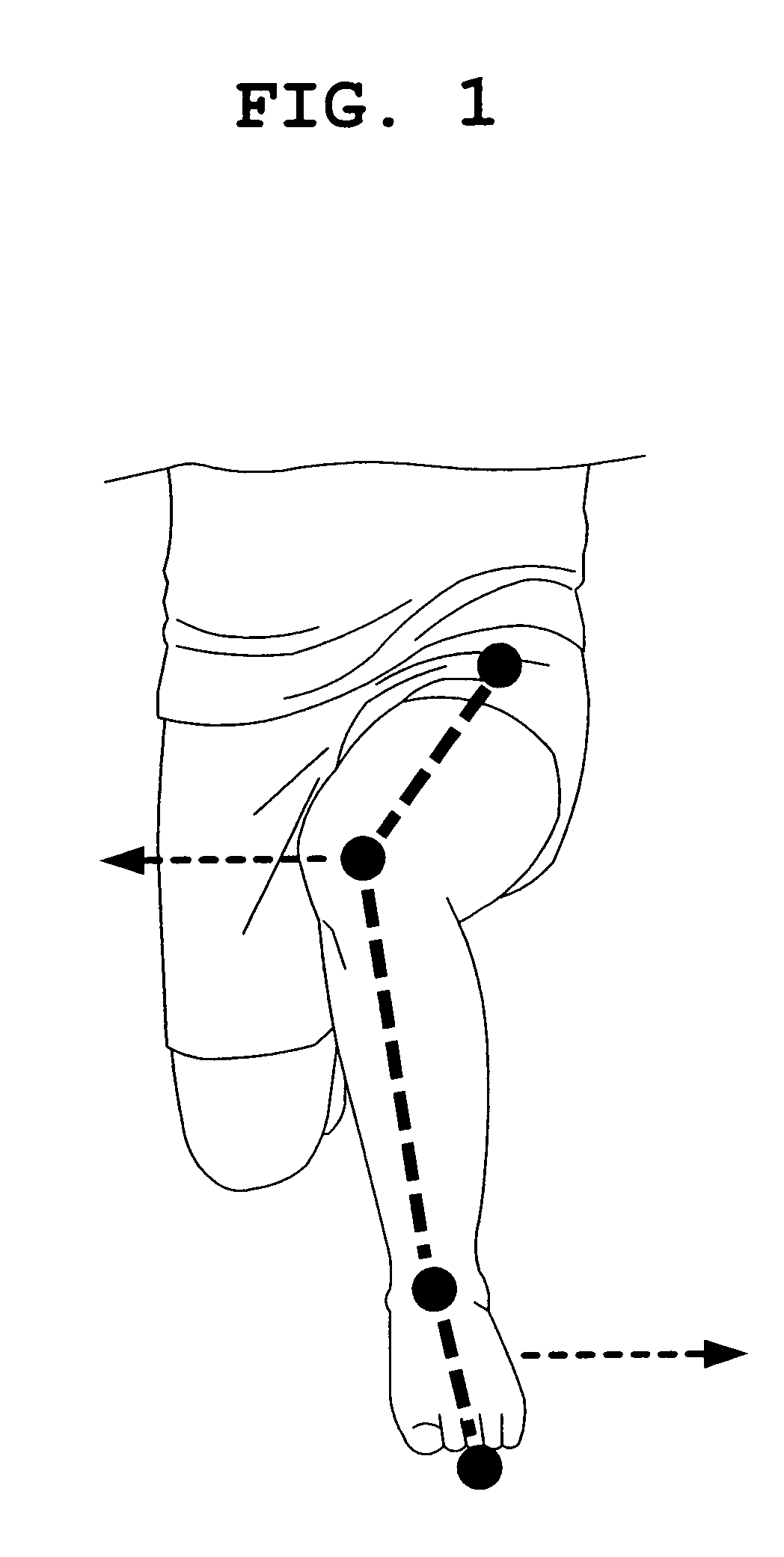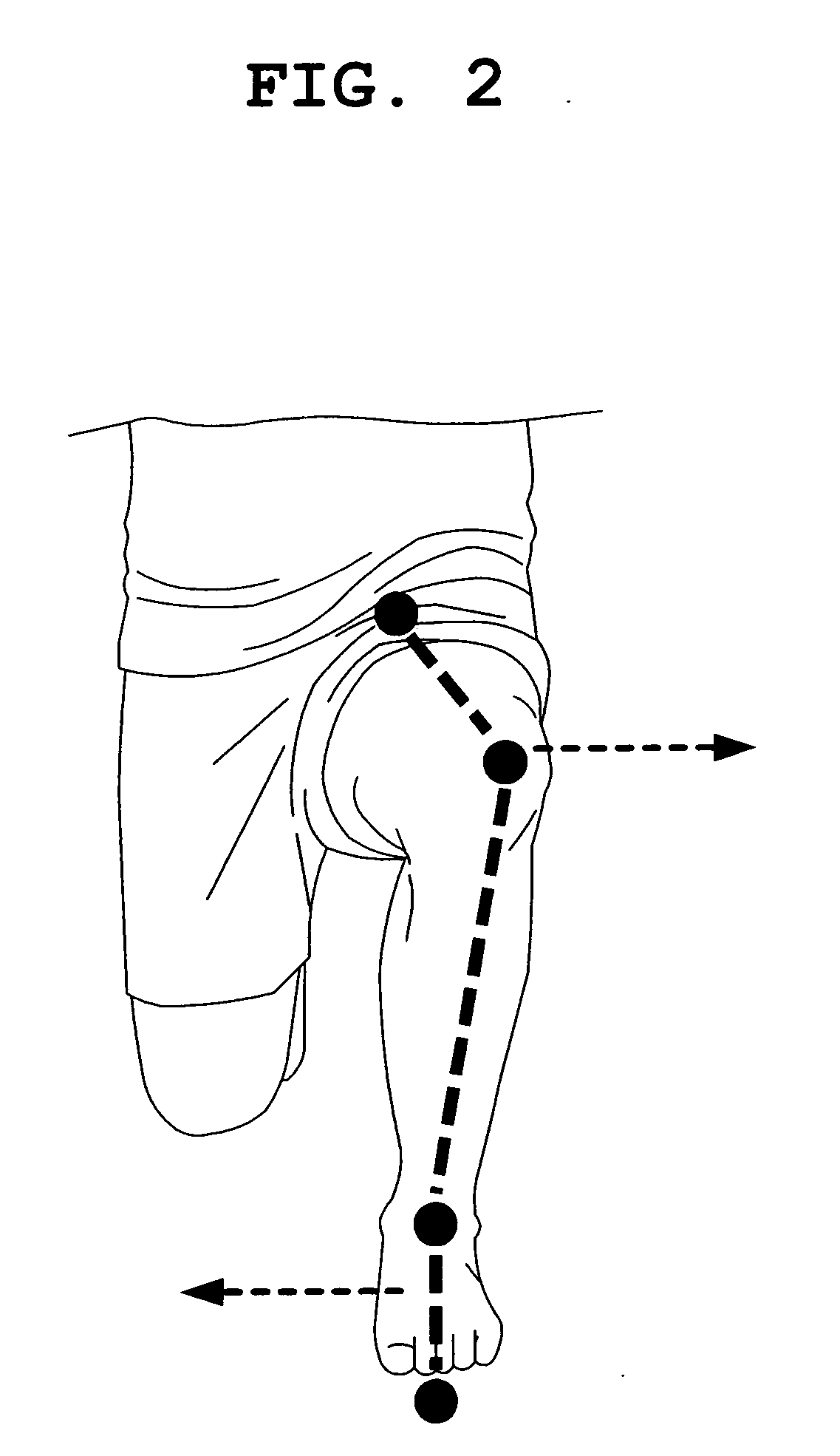Socks and production method of same
a technology of socks and production methods, applied in the field of socks, can solve the problems of increased recurrence rate of impairment, decreased recovery capacity, joint deformation, etc., and achieve the effect of easy formation of a complex configuration of the heel region and the ability to correct abnormal movement in the ankle join
- Summary
- Abstract
- Description
- Claims
- Application Information
AI Technical Summary
Benefits of technology
Problems solved by technology
Method used
Image
Examples
first embodiment
The first embodiment of the present invention will be described with reference to FIGS. 7 through 10. FIG. 7 is a drawing showing a sock 1 of the present invention according to the first embodiment, FIG. 8 is a drawing showing an action of forces, and FIGS. 9 and 10 are drawings that show an action on the ankle joint when the sock 1 according to the present invention is being worn.
In the drawings, numeral 1 denotes the sock according to the present invention, numeral 20 denotes an inelastic region, and numeral 30 denotes an angle-adjusting region. Also, numeral 20a denotes a heel constricting band, numeral 20b denotes an upper heel constricting band, and numeral 20c denotes a lower heel constricting band. In addition, numeral 40 denotes a foot insertion opening region, numeral 50 denotes an ankle region, numeral 60 denotes an instep-sole region, and numeral 70 denotes a toe region.
The sock 1 is provided with the heel constricting band 20a, the upper heel constricting band 20b, and t...
second embodiment
A second embodiment of the present invention will now be described with reference to FIG. 11. In this embodiment, the sock according to the previous embodiment is applied to stockings.
FIG. 11 is a drawing showing stockings according to the present embodiment. In the drawing, numeral 21 denotes an inelastic region, and numeral 31 denotes an angle-adjusting region.
Specifically, the stockings according to the present embodiment are stockings having a plurality of structural regions, each of which having a different elastic intensity when worn, wherein a heel constricting band 21a passing by an area near a tip of the calcaneal tuberosity and a superior portion of the talus, an upper heel constricting band 21b passing by the medial and lateral malleoli and the superior portion of the talus, and a lower heel constricting band 21c passing by an inferior end of the calcaneum near the toes the superior portion of the talus are, when worn, formed as an inelastic region 21 woven together into ...
PUM
 Login to View More
Login to View More Abstract
Description
Claims
Application Information
 Login to View More
Login to View More - R&D
- Intellectual Property
- Life Sciences
- Materials
- Tech Scout
- Unparalleled Data Quality
- Higher Quality Content
- 60% Fewer Hallucinations
Browse by: Latest US Patents, China's latest patents, Technical Efficacy Thesaurus, Application Domain, Technology Topic, Popular Technical Reports.
© 2025 PatSnap. All rights reserved.Legal|Privacy policy|Modern Slavery Act Transparency Statement|Sitemap|About US| Contact US: help@patsnap.com



